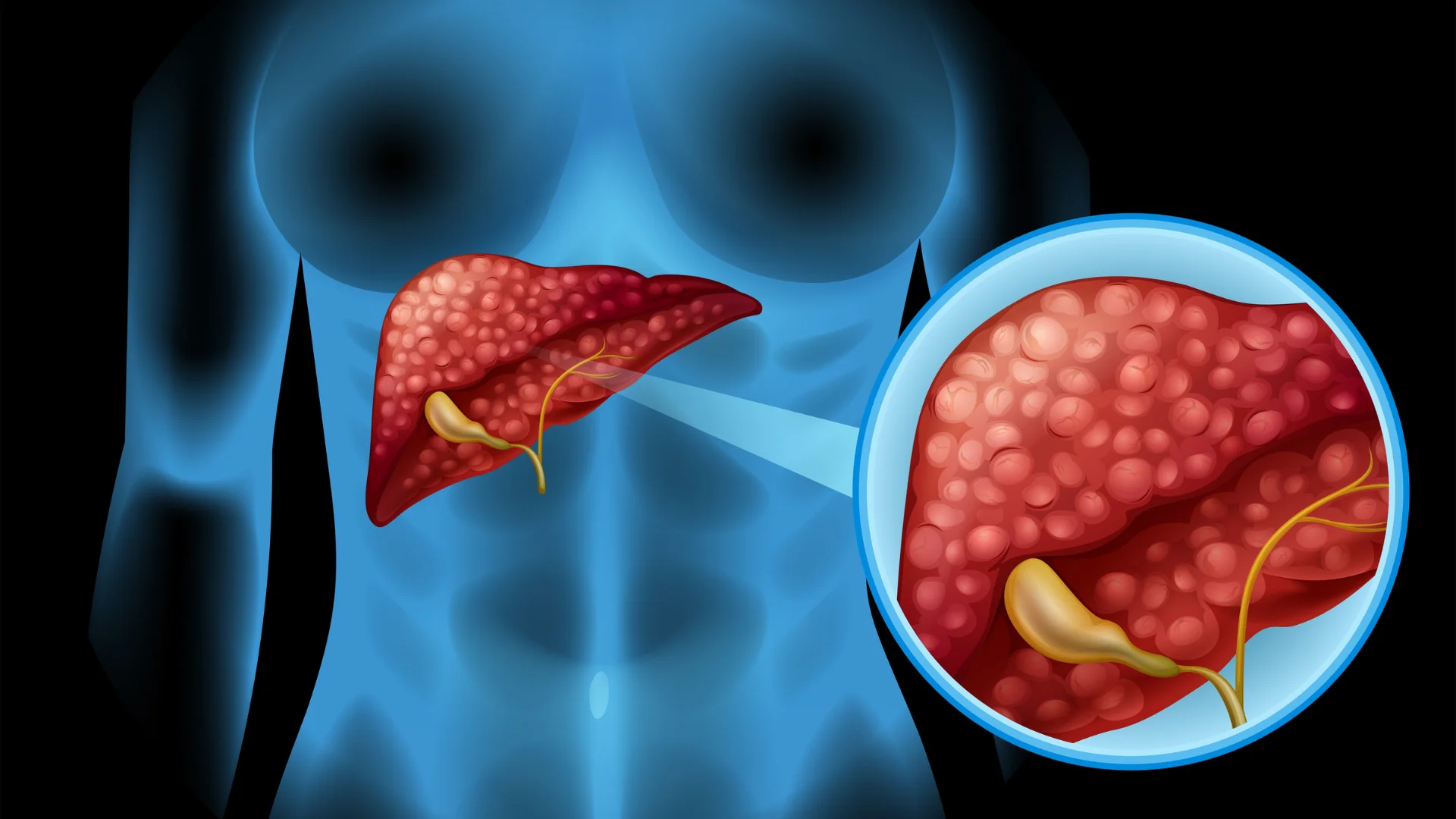
Understanding Liver Cirrhosis: Causes, Symptoms, and Treatment 💢
Liver cirrhosis is a serious condition that occurs when the liver becomes scarred and loses its ability to function properly. Often caused by long-term liver damage, it’s a progressive and irreversible disease, but early management can help prevent complications and improve quality of life.
What Happens in Liver Cirrhosis? 🔍
Cirrhosis involves:
- Scarring (fibrosis): Normal liver tissue is replaced by thick, fibrous tissue and regenerative nodules, giving the liver a bumpy, "potato-like" appearance.
- Portal hypertension: Scarring blocks blood flow through the liver, causing high pressure in the portal vein, which carries nutrient-rich blood from the intestines.
- Loss of liver function: The liver struggles to filter blood, process nutrients, and perform other vital tasks.
Cirrhosis develops gradually, often taking 10 years or more, although rare cases can progress faster.
What Causes Liver Cirrhosis? 🤔
The main causes include:
- Alcohol abuse: Responsible for about 40% of cases in industrialized countries.
- Chronic viral hepatitis: Hepatitis B, C, or D viruses cause 55% of cases.
- Other factors: Autoimmune diseases, iron or copper overload (hemochromatosis or Wilson's disease), and certain medications.
What Are the Symptoms? 👀
In its early stages, cirrhosis may not cause noticeable symptoms. As it progresses, you might experience:
- Fatigue and weakness.
- Fullness or pressure in the upper abdomen.
- Bloating (due to fluid buildup in the abdomen).
- Nausea and weight loss.
- Skin changes:
- Spider naevi: Red, spider-web-like spots.
- Palmar erythema: Redness on the palms and soles.
- Darkened skin (in hemochromatosis).
- Hormonal changes:
- In men: Loss of body hair, reduced sexual potency, testicular atrophy, or breast enlargement.
- In women: Irregular menstrual cycles.
Red Flags of Advanced Cirrhosis 🚨
Cirrhosis complications can lead to severe symptoms, such as:
- Jaundice: Yellowing of the skin and eyes.
- Tendency to bleed: Due to reduced clotting ability.
- Cachexia: Severe weight loss and muscle wasting.
- Portal hypertension complications:
- Bleeding from esophageal varices (enlarged veins).
- Ascites: Fluid buildup in the abdomen.
- Edema: Swelling in the legs or body.
- Splenomegaly: Enlarged spleen.
- Liver cancer (hepatocellular carcinoma).
How is Cirrhosis Diagnosed? 🩺
Doctors use a combination of tests and imaging to diagnose cirrhosis, including:
- Blood tests: To check liver function, inflammation, clotting, and markers of liver damage (e.g., SGOT, SGPT, bilirubin, albumin, and AFP).
- Imaging: Abdominal ultrasound, elastography (to assess tissue stiffness), and CT scans.
- Laparoscopy: A minimally invasive procedure to examine the liver directly.
Treatment Options 🏥
There is no cure for cirrhosis, but treatment focuses on slowing its progression, managing symptoms, and preventing complications.
1. General Measures 🚫
- Stop alcohol consumption: Even small amounts can worsen cirrhosis.
- Avoid liver-damaging medications: Such as paracetamol.
- Eat a balanced diet: With adequate calories, protein, and doctor-recommended vitamins.
2. Treating the Underlying Cause 💊
- Autoimmune hepatitis: Immunosuppressant medications.
- Chronic viral hepatitis: Antiviral therapy.
- Iron overload (hemochromatosis): Blood removal (phlebotomy) or chelation therapy.
- Copper overload (Wilson's disease): Medications like Trientine or D-penicillamine.
3. Managing Complications: Bleeding varices, ascites, and hepatic encephalopathy (confusion caused by liver toxins) are treated with specific medications, procedures, or surgery. 🛌
4. Liver Transplant: A transplant is the only option for advanced cirrhosis when the liver can no longer function. 🔄
Can Cirrhosis Be Prevented? 🛡️
Yes! Prevention is key:
- Avoid alcohol: Especially if you’re at risk of liver disease. 🚫🍺
- Get vaccinated: Protect yourself against hepatitis B. 💉
- Practice safe habits: Avoid unlicensed clinics, protect yourself during sexual activity, and avoid sharing needles. ⛑️
- Be cautious with medications: Only take drugs like paracetamol as directed. 💊
- Get regular check-ups: Early detection of liver problems through blood tests and ultrasounds can make a big difference. 🩺
Final Thoughts
Cirrhosis is a progressive and irreversible disease, but with early detection and the right care, complications can be managed, and quality of life can improve. If you’re at risk or experiencing symptoms, don’t wait—consult a healthcare provider and take proactive steps for your liver health.
🩺 Explore out our Check-Up Programs!
📅 Book your appointment now!
DISCLAIMER:
The information presented on this page has been intentionally condensed and simplified to make it accessible and easier to understand for the general audience. Its purpose is solely to provide basic awareness and education on the topic discussed. It is important to note that this content is not exhaustive and does not replace or serve as a substitute for professional medical advice, diagnosis, or treatment. Readers are strongly advised to seek consultations with qualified healthcare professionals or specialists for accurate assessment, personalized guidance, and appropriate medical care. Relying solely on the information provided here, without professional oversight, may lead to misunderstandings or inadequate treatment.
